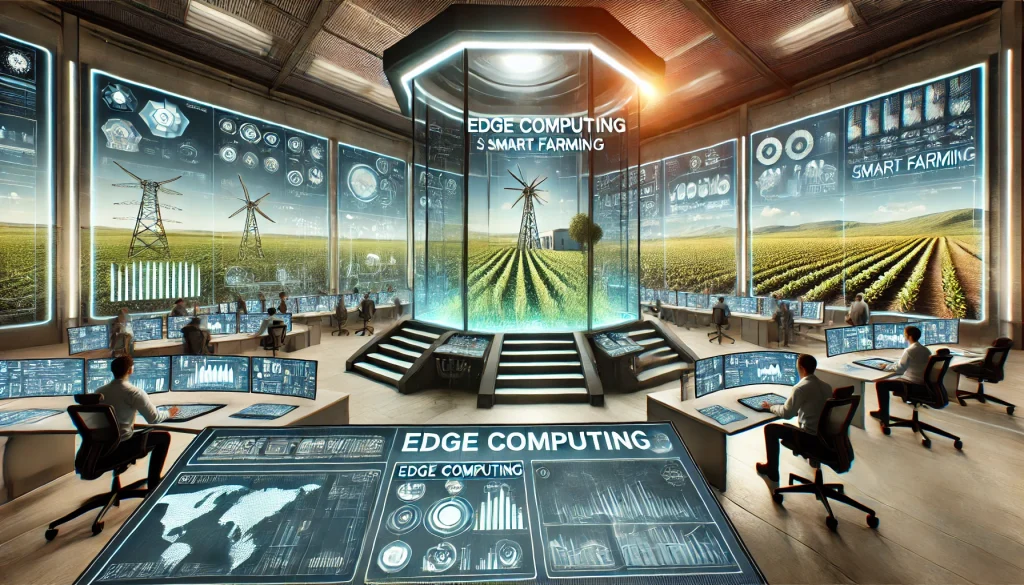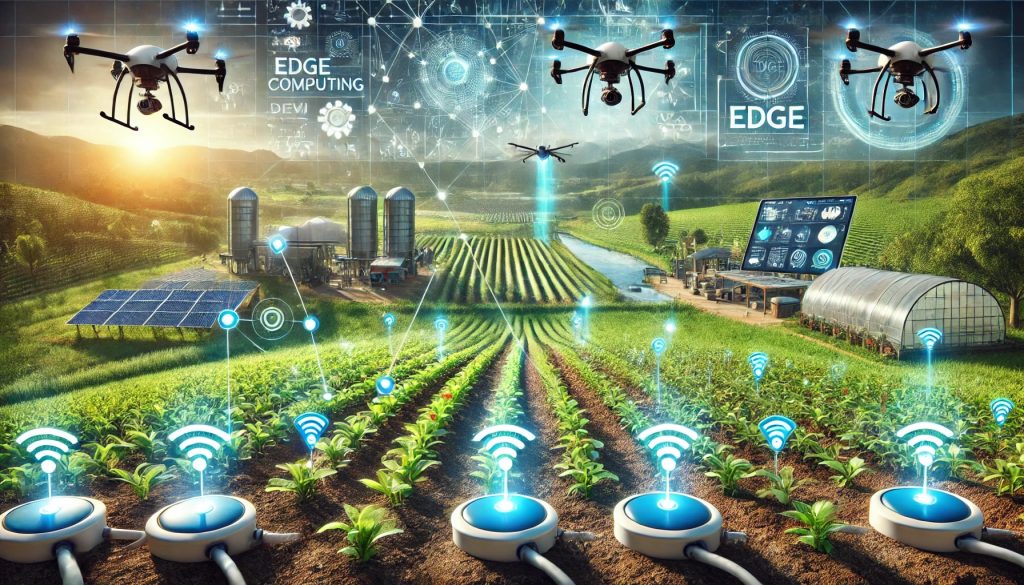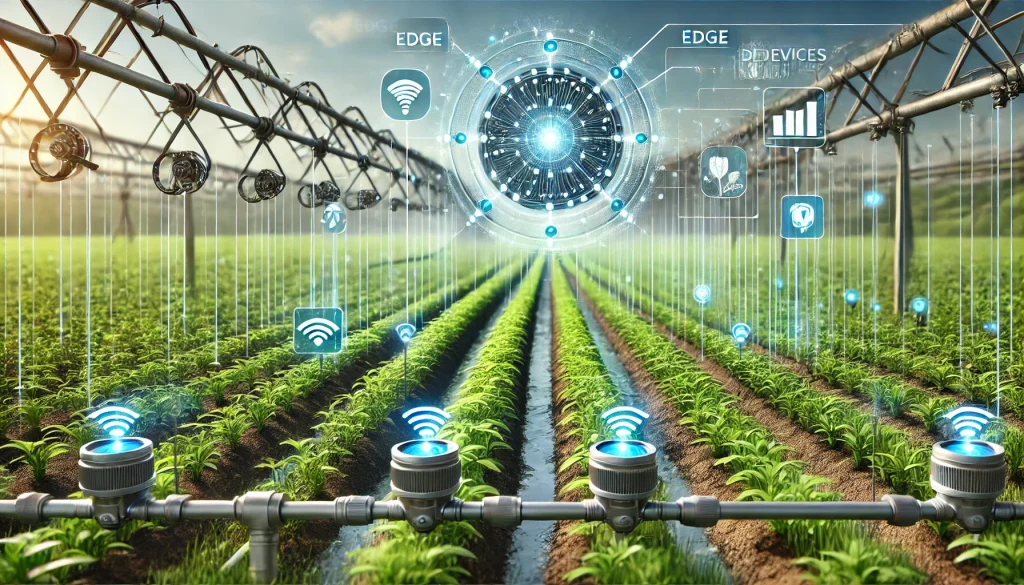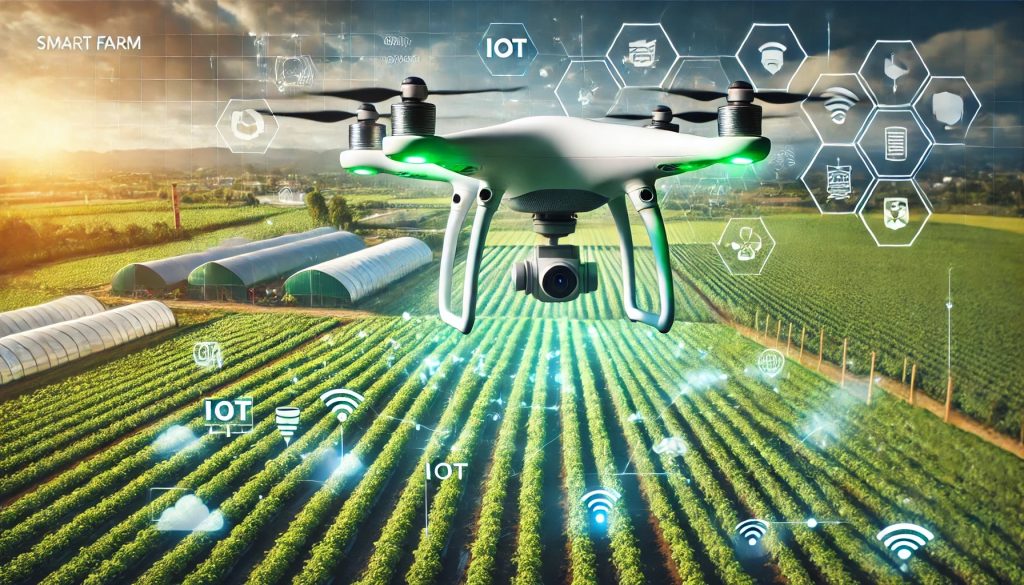The Power of Edge Computing: Revolutionizing Data Processing
Written By Richard Armstrong – Software Development Manager & Architect – Aug 2024
Introduction
In today’s data-driven world, traditional centralized cloud computing models are struggling to keep up with the increasing demand for real-time processing and low-latency applications. Enter edge computing—a transformative approach that brings computation and data storage closer to the data source. By decentralizing data processing, edge computing is set to revolutionize industries and redefine how we interact with technology.

Understanding Edge Computing
Edge computing is a distributed computing paradigm that processes data at the edge of the network, near the data source, rather than relying solely on a centralized data center. This proximity significantly reduces latency and bandwidth usage, enabling faster and more efficient data processing.
Real-World Applications of Edge Computing
Edge computing is already making significant impacts across various sectors:
- Autonomous Vehicles: Autonomous cars require real-time data processing to make split-second decisions. Edge computing allows these vehicles to process data locally, reducing the latency that could be critical in life-or-death situations.
- Healthcare: Wearable devices and IoT sensors generate vast amounts of health data that need to be processed quickly. Edge computing enables real-time health monitoring and alerts, improving patient outcomes and operational efficiency in healthcare facilities.
- Smart Cities: From traffic management to public safety, smart cities rely on real-time data to function efficiently. Edge computing allows for immediate data analysis and action, enhancing the responsiveness and intelligence of urban infrastructure.
- Industrial IoT: Manufacturing plants use edge computing to monitor equipment performance and predict maintenance needs. This minimizes downtime and optimizes production processes, leading to significant cost savings and increased productivity.

Benefits of Edge Computing
The advantages of edge computing are clear and compelling:
- Reduced Latency: Processing data closer to the source minimizes the delay caused by data traveling to and from centralized servers. This is crucial for applications requiring immediate responses, such as autonomous systems and real-time analytics.
- Bandwidth Optimization: By reducing the amount of data transmitted to central data centers, edge computing eases the burden on network bandwidth. This is particularly beneficial for applications generating large volumes of data, such as video surveillance and IoT sensors.
- Enhanced Security and Privacy: Local processing of data means sensitive information doesn’t need to travel across networks, reducing the risk of interception and breaches. This local processing also helps organizations comply with data privacy regulations.
- Scalability: Edge computing allows organizations to scale their operations more effectively by distributing computing resources. This decentralized approach makes it easier to manage and expand data processing capabilities without overloading centralized systems.
The Architecture of Edge Computing
Key Components of Edge Computing Architecture
Understanding the architecture of edge computing is essential for effective implementation. Here are the key components:
- Edge Devices: These are the end devices that generate data, such as sensors, cameras, or IoT devices. While they have limited processing power and storage capacity, they play a crucial role in collecting and transmitting data.
- Edge Gateways: Gateways act as intermediaries between edge devices and the cloud or data center. They perform initial data processing, filtering, and aggregation, reducing the volume of data that needs to be transmitted.
- Edge Servers: Located closer to the data source than centralized data centers, edge servers provide more substantial processing power and storage capacity than edge devices. They handle more complex data processing tasks and store data temporarily.
- Cloud Data Centers: While edge computing aims to reduce reliance on centralized cloud data centers, these centers still play a vital role in storing vast amounts of data and performing advanced analytics that require significant computational resources.
Architectural Patterns
Various architectural patterns can be employed to implement edge computing:
- Three-Tier Architecture: This classic model involves edge devices, edge gateways, and centralized cloud data centers. Data is processed at each tier, starting from the edge device and moving towards the cloud, with increasing levels of processing complexity.
- Hierarchical Architecture: In this model, multiple layers of edge servers and gateways exist, forming a hierarchy. Data moves from edge devices to local edge servers and then to regional edge servers before reaching the central cloud. Each layer performs additional processing and filtering.
- Federated Learning Architecture: This model focuses on distributed machine learning where data is processed locally at the edge, and only the model updates are sent to a central server. This approach enhances data privacy and reduces bandwidth usage.
Integrating Edge Computing into Existing Architectures
Steps to Incorporate Edge Computing
To effectively integrate edge computing into your existing architecture, follow these steps:
- Assess Requirements: Identify the specific needs of your application, including latency requirements, data volume, and processing power. Determine the most critical data that needs real-time processing.
- Select Suitable Edge Devices: Choose edge devices that meet the processing and connectivity requirements of your application. Ensure they have the necessary sensors and capabilities to collect and process data.
- Deploy Edge Gateways: Set up edge gateways to perform initial data processing and filtering. Ensure they have sufficient processing power and connectivity to handle the data from edge devices.
- Implement Edge Servers: Place edge servers strategically to balance the load and provide additional processing power. These servers should be capable of handling more complex data processing tasks.
- Optimize Data Flow: Design the data flow between edge devices, gateways, and servers to minimize latency and optimize bandwidth usage. Implement data aggregation and filtering at each stage to reduce the data volume sent to the cloud.
- Ensure Security: Implement robust security measures at each layer of the architecture. Encrypt data at rest and in transit, and deploy security protocols to protect edge devices and gateways from attacks.
- Monitor and Maintain: Continuously monitor the performance of the edge computing infrastructure. Implement maintenance routines and updates to ensure the system remains secure and efficient.

Best Practices
- Leverage Containerization: Use containerization technologies like Docker to deploy applications consistently across different edge devices and servers.
- Utilize AI and ML: Incorporate AI and machine learning models at the edge to enable real-time analytics and decision-making.
- Adopt Standards: Follow industry standards and best practices for edge computing to ensure compatibility and interoperability between devices and systems.
The Future of Edge Computing
As the volume of data continues to grow and the demand for real-time processing intensifies, the adoption of edge computing is expected to accelerate. Innovations in 5G technology, AI, and IoT will further fuel the development and deployment of edge computing solutions.
Practical Example: Smart Farming with Edge Computing
Now that we’ve covered the basics, let’s dive into a real-world example to see edge computing in action. Nothing beats a practical example to understand how this technology truly works.
Application Overview
In smart farming, edge computing can play a crucial role in enhancing crop management, monitoring soil health, and optimizing irrigation systems. By leveraging sensors, drones, and edge devices, farmers can gather real-time data to make informed decisions, ultimately improving crop yields and reducing resource usage.
Data Distribution and Management
Data at the Edge
Edge devices, such as sensors and drones, are deployed throughout the farm to collect various types of data. This data includes:
- Soil Moisture Levels: Sensors placed in the soil measure moisture content, providing real-time data on soil health and hydration needs.
- Weather Conditions: Weather stations equipped with sensors monitor temperature, humidity, wind speed, and rainfall.
- Crop Health: Drones equipped with multispectral cameras capture images to assess crop health, detect diseases, and identify pest infestations.
- Irrigation Systems: Smart irrigation controllers collect data on water flow and usage, ensuring optimal irrigation schedules.
These edge devices process data locally to provide immediate feedback and actions. For example, if a soil moisture sensor detects low moisture levels, it can trigger the irrigation system to water the plants without waiting for instructions from the cloud.
Data in the Cloud
While edge devices handle immediate data processing and actions, more complex data analysis and long-term storage are managed in the cloud. The cloud stores and processes:
- Historical Data: All collected data from sensors, drones, and irrigation systems is stored in the cloud for historical analysis and trend identification.
- Advanced Analytics: Machine learning models run in the cloud to analyze historical and real-time data, providing predictive analytics for crop yield forecasts, disease prediction, and resource optimization.
- Farm Management System: A centralized farm management application in the cloud integrates all data sources, providing a dashboard for farmers to monitor and manage their operations.
Data Distribution Across Edge and Cloud
Data distribution involves a seamless interaction between edge devices and cloud infrastructure:
- Data Collection: Sensors and drones collect real-time data at the edge.
- Local Processing: Initial data processing occurs on edge devices. For example, drones can analyze crop health images on-site to detect issues immediately.
- Data Transmission: Processed data and relevant metrics are transmitted to the cloud for further analysis and storage. Only essential data is sent to minimize bandwidth usage.
- Cloud Processing: The cloud performs advanced analytics on aggregated data, updating predictive models and providing insights.
- Feedback Loop: Insights and recommendations from the cloud are sent back to edge devices. For instance, if the cloud analytics predict a disease outbreak, this information is sent to the edge, prompting drones to perform targeted spraying.

Application Integration
Edge Devices and the App
A mobile or web-based farm management app interfaces with both edge devices and the cloud. Key functionalities include:
- Real-Time Monitoring: The app displays real-time data from edge devices, allowing farmers to monitor soil moisture, weather conditions, and crop health on the go.
- Alerts and Notifications: Farmers receive alerts based on edge device data, such as low soil moisture or detected pest infestations, enabling quick responses.
- Historical Data Access: The app provides access to historical data stored in the cloud, helping farmers analyze trends and make data-driven decisions.
Cloud and the App
The cloud serves as the backbone for advanced analytics and data storage:
- Predictive Analytics: The app displays insights and forecasts generated.
This example illustrates how edge computing can be applied in a real-world scenario, detailing the distribution of data between edge devices and the cloud, and how the application integrates with both to provide comprehensive farm management solutions. by cloud-based machine learning models, such as predicted crop yields and recommended irrigation schedules.
- Data Visualization: Interactive charts and graphs in the app help farmers visualize data trends and analytics results.
- Integrated Management: The app integrates data from various edge devices and cloud analytics, offering a unified platform for farm management.
By distributing data processing between the edge and the cloud, smart farming applications can deliver real-time, actionable insights while leveraging the power of advanced analytics and historical data analysis. This hybrid approach ensures efficient resource usage, timely interventions, and improved crop management.
The Future of Edge Computing
As the volume of data continues to grow and the demand for real-time processing intensifies, the adoption of edge computing is expected to accelerate. Innovations in 5G technology, AI, and IoT will further fuel the development and deployment of edge computing solutions.
Conclusion
Edge computing is poised to revolutionize data processing by addressing the limitations of traditional cloud computing models. Its ability to reduce latency, optimize bandwidth, enhance security, and improve scalability makes it a critical technology for the future. By leveraging the power of edge computing, organizations can stay ahead of the curve, delivering faster, smarter, and more responsive services to their customers.
By integrating edge computing into their architectures, businesses can unlock new levels of efficiency and innovation, ensuring they are well-positioned to meet the demands of the digital age.
Call to Action
As you can see, edge computing holds immense potential for transforming industries by enabling real-time data processing and enhancing operational efficiency. If you are ready to leverage the power of edge computing for your business, we can help you design and implement a tailored solution that meets your specific needs. Contact us at High Vision Systems LLC today to discuss how we can bring cutting-edge technology to your operations and drive your business forward. Let’s work together to harness the future of computing and unlock new opportunities for innovation and growth.


